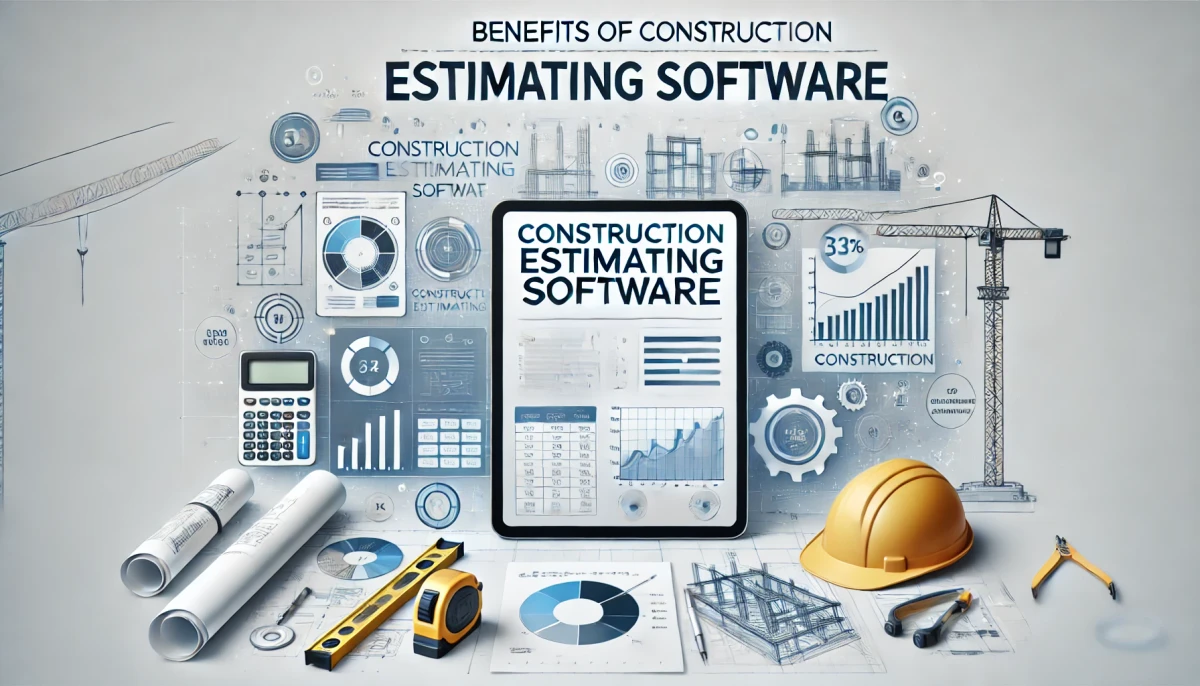Benefits of construction estimating software
Construction estimating software can be the key to a successful project. The reason lies in the benefits a technology like this can offer.
by
Quickadmin • 10/31/2024

Benefits of construction estimating software
By nature, a construction project will always be a complicated process involving multiple phases, teams and often unpredictable variables, especially around budget, given that managing cost through the project requires constant monitoring and adjustments to address fluctuation in material prices, labor and equipment.
In the long term, this can prove unsustainable if miscalculations, unforeseen expenses or inadequate contingency planning, are not properly managed. A successful construction project, therefore, demands an innovative solution, in other words, an estimate software.
For a construction company, an estimating software means having a digital tool capable of accurately forecasting project costs. With features such as real-time cost tracking, integrations with other management softwares, and customizable templates, estimating software enhances the company’s financial control and overall influence over the market.
These advantages position any construction team above the competition. Learn more about it and explore how this software can transform the way a construction company operates, driving growth and ensuring long-term success in a competitive landscape.
Why choose construction estimating software?
With each new company that opens up to the possibility of adopting an estimate software as the cornerstone of their project management approach, it becomes increasingly clear that this technology’s impact on overall project execution, profitability, and business reputation is significant beyond a simple tool for budgeting.
Evidence can be found in the amount of benefits that an estimate software can offer, like the following:
1.- Increased accuracy
Often, the word “estimation” suggests a vague approximation of something, but for construction estimating software, this is not the case as the technology provides a precise, data-driven insight into all possible expenses associated with the project.
By considering the cost of legal fees, permits, site preparation, materials, labor, equipment, utilities, contingency plans and, if applicable, financing fees, the software allows construction companies to unify their data and create comprehensive, highly accurate estimates.
This thorough approach minimizes unexpected costs and ensures that all potential expenditures are accounted for upfront, providing clients with a clear financial picture and enabling companies to manage budgets efficiently.
2.- Time efficient
Manually gathering and classifying the quantity and cost of everything needed to carry out a construction project from start to finish is both an inaccurate and time-consuming process. Not to mention that this approach often leads to errors, missed items, and budget overruns.
However, estimate software automates this process, allowing teams to quickly generate detailed and accurate estimates by pulling data from up-to-date cost databases and other supplier’s price lists. This enables project managers to focus on execution rather than constantly recalculating figures.
Also, by streamlining the estimation process, a time buffer is created to address any potential setbacks or emergencies more effectively, reducing delays and ensuring the projects remain on schedule.
3.- Eliminates human errors
A key aspect of the controversy surrounding the use of new technology is the fear that software may replace human skills. Although estimate software can successfully minimize and even eliminate all margin for human error through the automation of calculations and data analysis, it is important to recognize that these tools are designed to augment human capabilities rather than replace them.
While estimated software can handle this task more efficiently, it still relies on the expertise and judgment of skilled professionals to interpret data, make informed decisions and manage complex project dynamics.
When we say that one of the benefits of using and estimating software is eliminating human error, it means that the software takes care of repetitive and error-prone calculations, allowing professionals to devote their attention to higher-level tasks that require critical thinking and creativity.
4.- Maximize profitability
One of the challenges faced in all construction projects is the possibility of cost overruns due to inaccurate data. For a business with a limited budget or a desire for higher profit, this can lead to project failure and, therefore, a financial loss.
To mitigate this risk, implementing estimating software becomes crucial, as it guarantees cost-effectiveness by ensuring real-time tracking throughout the entire project so they can stay on budget and take advantage of cost-saving opportunities.
How is this possible? Estimate software not only provides accurate forecasting of expenses, it also identifies areas where savings can be made using strategies such as negotiating better rates with supplies or optimizing labor schedules. Always prioritizing quality over a lower price. The combination of these strategies results in successful projects and greater profits.
5.- Enhanced collaboration
An estimating process using this software requires a team —a group of skilled professionals working collaboratively to ensure accurate and comprehensive project assessments. We are talking about architects, engineers, project managers, estimators and other specialists working together under the same platform.
This collaborative environment allows each team member to contribute their unique expertise and insights, ensuring that all aspects of the project are considered. Architects can provide design specifications, engineers can assess structural integrity, project managers can oversee timelines and resources, and estimators can focus on cost calculations.
With the estimating software acting as a centralized hub, all relevant data and updates are easily accessible to everyone involved. This real-time access enhances communication, reduces the risk of miscommunication, and ensures all team members are aligned on project goals and deliverables.
6.- Easy to use
Estimation software is designed to be user-friendly, facilitating scalability for growing businesses. This can be seen in its intuitive interface that allows team members, regardless of their technical expertise, to learn and adapt to the software quickly, taking advantage of simple training resources and customizable features tailored to their specific needs.
As companies grow and evolve, they can easily implement new features, templates, or reporting formats that align with their operational changes, ensuring that the software remains relevant and effective.
7.- Foster project transparency
To properly function, every piece of analyzed data grouped by the estimated software must be visible. This visibility serves two primary purposes: it enhances convenience for team members and strengthens relationships with clients and potential investors.
Transparency in the estimating process fosters accountability and professionalism. Clients value being informed about project costs, building trust, and assuring that their investments will be managed responsibly. Also, regular updates on budgeting and expenses can help clients feel more engaged and involved in the project, reducing anxiety and uncertainty about financial matters.
Overall, the decision to use construction estimate software depends on a team’s specific needs and the project’s complexities. We hope the benefits we have listed here can help simplify that decision. If you want to delve into a specific section of today’s article, please don’t hesitate to contact us or check out our blog for more similar content.

